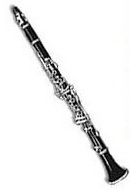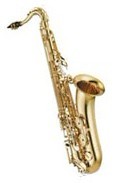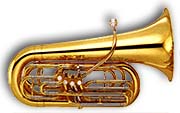Instruments
Classical instruments came from the 18th century in Europe, which are used for classical music performance. Classical instruments have many various types; including woodwind instruments, brass instruments, stringed instruments, percussion instruments, and keyboard instruments. Those instruments together can make an instrumental orchestra to performa symphony, which uses those instruments as a foundation and utilizes a conductor to control the rhythm of movements. Also, sometimes people may have a smaller group; using less instruments to performa ensemble. Moreover, when the symphony has one main instrument and others to accompany; it’s usually called concert for that instrument.
Beethoven Symphony No. 5: I – UNC Symphony Orchestra
Art-Strings Ensembles -Tango from Scent of a Woman
Tchaikovsky Concerto for violin and orchestra in D major op.35 3rd movement
Types of instruments:
Woodwind instruments’ origin evolved from early fork flutes. The woodwind instruments have the richest tones of the classical instruments, which are usually used to show the natural and village life in symphony. It use the vibration of the air to get sounds. Although it is called woodwind, there are not only made by wood, but also made by metal, ivories, bones of the animals, etc. Woodwind instruments include flute, piccolo, clarinet, oboe, English horn, bassoon, and saxophone.
Images of woodwind instruments (in order: flute, piccolo, clarinet, oboe, English horn, bassoon, saxophone)
Brass instruments grew out of the bugle and the horns for hunting. It wasn’t used widely in the early symphonies. It became widely used around early 19th century. Brass instruments have powerful and extensive sound volume, which other instruments cannot compare. It includes trumpet, French horn, trombone, and tuba.
Images of Brass instruments (in order: trumpet, French horn, trombone, and tuba)
Stringed instruments are using for almost lyrical music because its sounds soft, beautiful, and united. When it perform as ensemble, it shows surging and passionate. In contrast, when its perform as solo, it shows gentle and graceful. Because of the rich and varied bowing (trembling, broken, call, jump, etc.), it has possibility to play different melody. It includes violin, viola, cello, double bass, harp, guitar, and bass.
Images of Stringed instruments (in order: violin, viola, cello, double bass, harp, guitar)
Percussion instruments have the longest history in instrument family. There are many different features of percussion instruments. Although there are single tones and sometimes cannot make music individually, they heightened the joyous atmosphere of the symphonies. It includes timpani, xylophone, snare drum, bass drum, triangle, tambourine, castanets, maracas, cymbals, and gong.
Images of percussion instruments (in order: timpani, xylophone, snare drum, triangle, tambourine, cymbals)
The common of keyboard instruments is all of them have keyboard. They have advantages compared to other instruments; they have wide diapason and possibility to play different sounds in once. Keyboard instruments include piano, organ, accordion, electronic keyboard.
Images of keyboard instruments (in order: piano, organ, accordion)



























By: gkaki on April 4, 2012 at 12:40 pm
well organized with a sequence that help any visitor to understand what this blog will share
By: nalluhid on April 4, 2012 at 12:42 pm
Hi!
Your writing is perfect. Fertermore, I your ways to post the pectires. They make the page classified.
By: Ghania on April 8, 2012 at 10:08 pm
Excellent description of instruments. Just reread the text because there were some missing words.